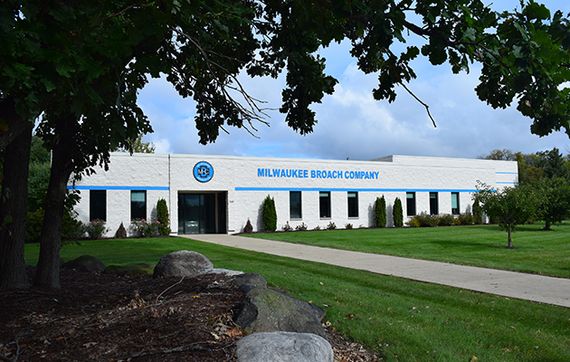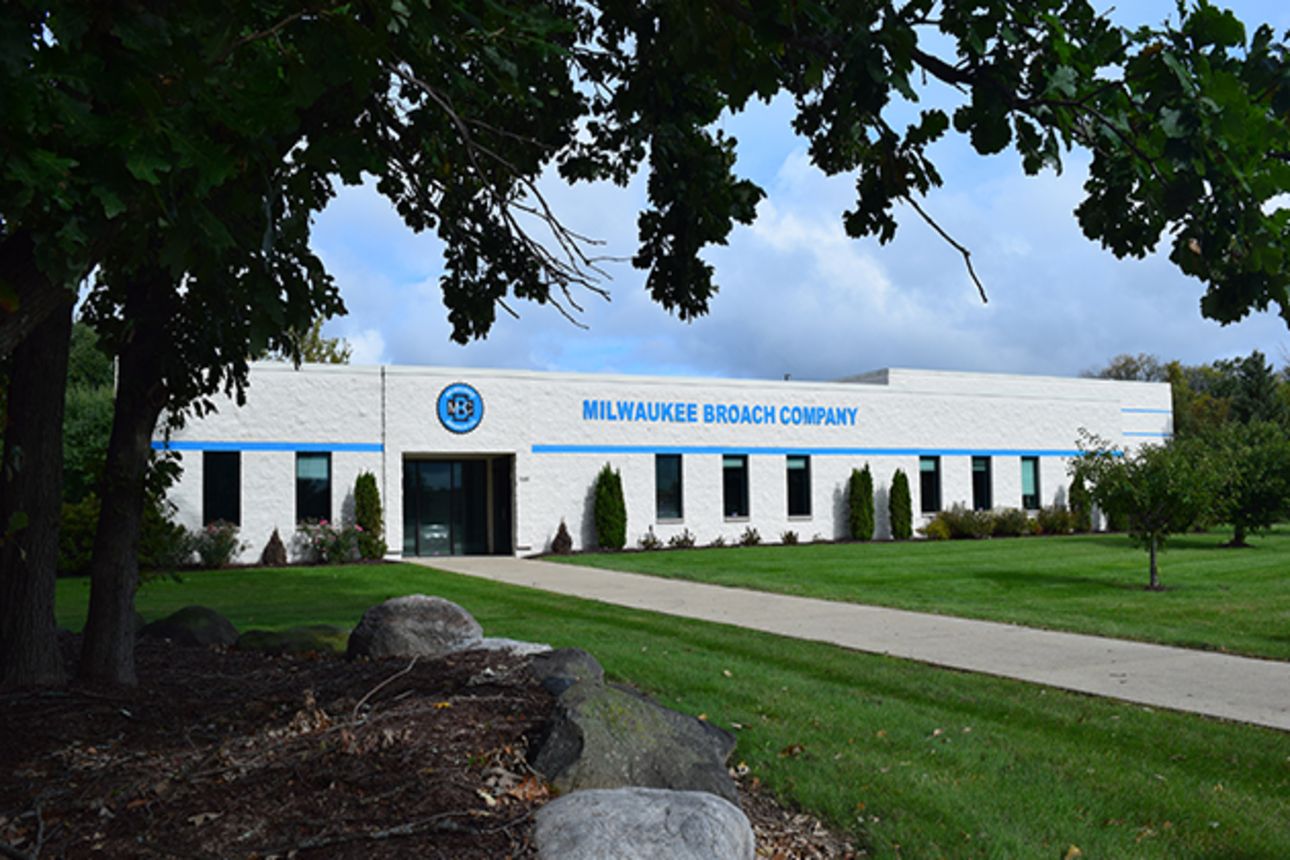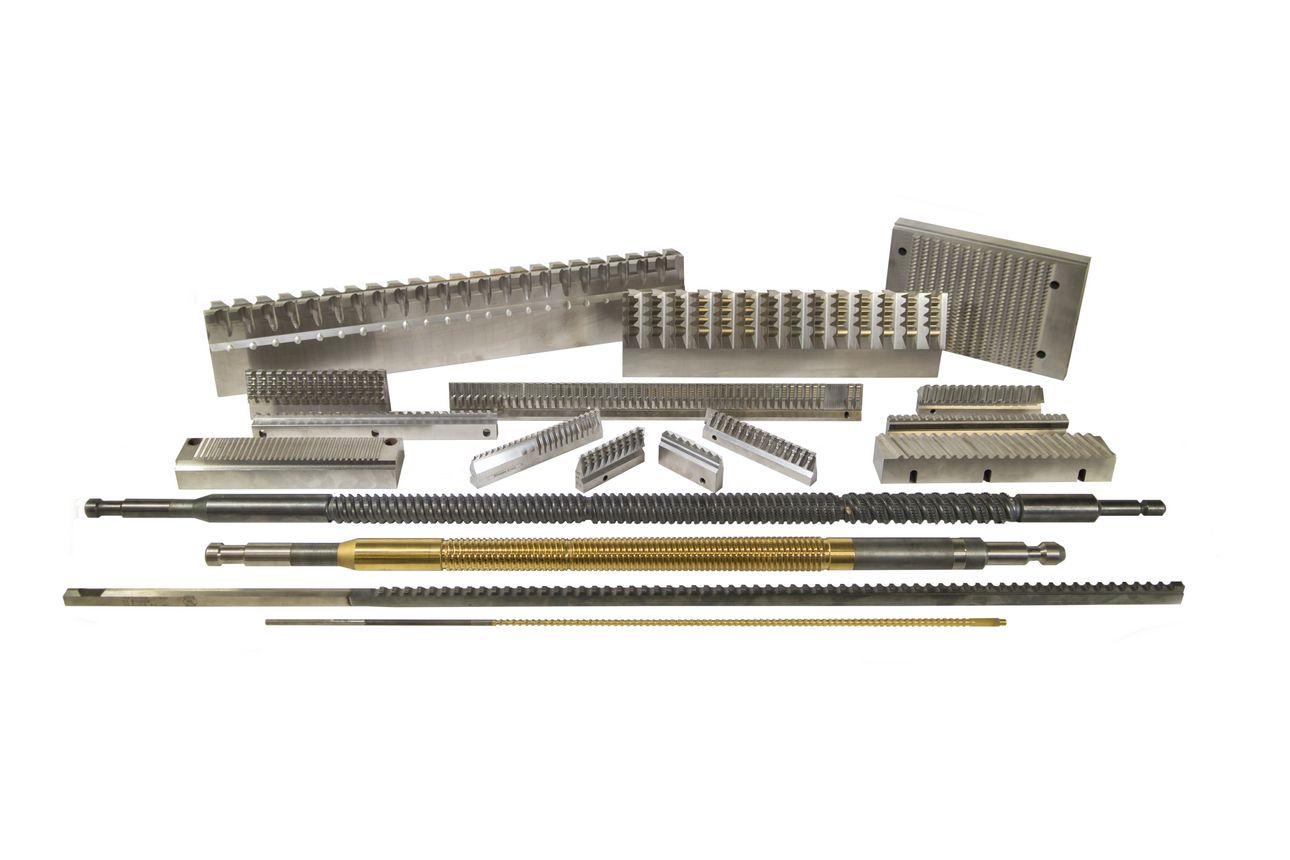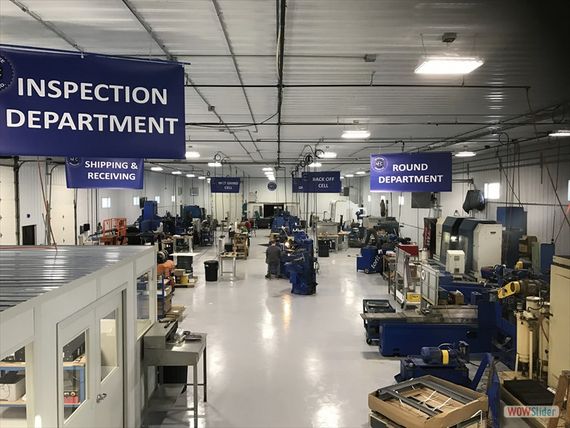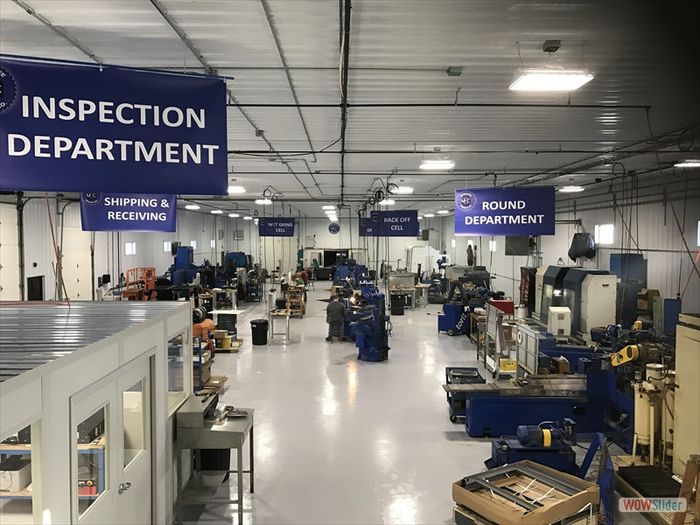Shop Excels at Grinding Unique Tools for Demanding Industries
When it comes to specialized machining, Milwaukee Broach tops a list all its own. Its flagship products meet unique needs with one-of-a-kind tools, and it's built a reputation for customer-centered quality backed by skillful engineering. To maintain that reputation, the company relies heavily on its grinding machine technology to produce the complex broaches that are used to then create features on even more complex parts.
Headquartered in New Berlin, Wisconsin, with more than 50 skilled machinists in 25,000 square feet of manufacturing space, Milwaukee Broach creates cutting tools used to produce aerospace, automotive, hand tool, mining, farming and power generation industry parts, along with fixtures and subholders required for these tools. In the midst of 30% sales growth over a period of three or four years, Milwaukee Broach has invested $5 million in new equipment since 2017 – and its all-CNC shop floor looks very different from the all-manual one from the company's beginnings.
Among the tools that enable Milwaukee Broach to create its tight-tolerance, high-precision products, four BLOHM PLANOMAT HP surface and profile grinding machines from UNITED GRINDING produce mountains of rough finish work. Unlike manual equipment that relies on operator skill for every tenth of precision, the CNC-driven BLOHM machines prevent operator error both in setup and in production itself.
The company relies on UNITED GRINDING for the combination of high-quality results, cost effectiveness and all-encompassing customer service. Milwaukee Broach recently retired BLOHM hardware that had been in service for nearly two decades, providing reliable results throughout the years since the company began producing products for aerospace customers. The replacements for these machines? More BLOHM PLANOMAT HP machines, of course.
"We use UNITED GRINDING machines to remove material and finish body dimensions. They do a very good job, and they're workhorses for us," DeBakker said. Milwaukee Broach Director of Operations Bob Soderman concurred, stating that "The BLOHM machines quickly remove material and do so with precision. They take our parts down to anywhere between three to five thousandths worth of stock."
In addition to enduring quality, Milwaukee Broach appreciates its BLOHMs for their high repeatability. Once engineers and operators create and load a program, the machines operate so consistently that one person can run two machines simultaneously, an impossibility on manual equipment. "We tried other brands of grinding equipment," said Soderman, "but UNITED GRINDING offered us the combination of price and quality. These machines run nearly 24 hours a day." The BLOHM units' EasyProfile control units simplify the task of handling a truly high-mix production environment.
When Milwaukee Broach needs service assistance, UNITED GRINDING provides quick, reliable attention to its needs. "How important is support to us? Very important. We can't be down. Nearly 80% to 85% of our tools go through our BLOHM machines. They're critical, and they run all the time," Soderman said. To provide a failsafe backup, the company has duplicated its equipment setup in its 10,000-square-foot Norway, Michigan, location, which also enables Milwaukee Broach to shorten delivery times while it adds production capacity.
BLOHM equipment helps Milwaukee Broach profile fir tree type broaching tools for gas turbines. With interlocking blades, these tools work in a series, pulled through a part in sequentially larger sizes to remove material and maintain proper chip flow out of the part and the tool, yielding a high-quality finish. The nature of the company's work means that out of a run of 100 pieces for an individual customer, each tool will require unique features in different forms, providing a textbook example of a high-mix, low-volume workflow.
A typical fir tree tool requires as many as 15 to 25 checks during production, including side to side, up and down, location and more, with in-process checking as well as first-piece inspection. Once that first piece passes muster, Milwaukee Broach can rely on its BLOHM equipment for the stability, power and consistency to produce the remainder of a job lot. Additional checks take place after part production completes.
Broach machines require tools that meet specific size requirements. Within those limits, Milwaukee Broach typically produces tools that average between 15" and 20", with its longest broaches measuring 38". Ultra-large parts may not number among the company's challenges, but the materials out of which it creates its products definitely push its grinding machines hard.
Milwaukee Broach approaches creating tools to handle challenging materials such as Inconel from a position of astute experience. For such broaches, the company can adjust rake angles after production is completed to improve the performance of a tool even further. "We could give you a tool with a 15-degree rake angle on the cutting face or adjust that if need be," DeBakker commented. His engineers approach new materials with an understanding of how similar options have performed in the past.
High-speed powder metals such as CPM T15 and CPM4 tool steels also dominate the company's production, both of which require considerable force to grind. The company also offers full CNC-based resharpening services for broaches made from these and other materials. Additionally, its tool design suggestions help customers create tools with optimal lifespans while its operating recommendations cover how long tools should run before repair or replacement.
With ISO 9001:2015 certification, Milwaukee Broach clearly offers customers a quantified reputation for quality. In addition, some customers conduct their own quality checks and onsite audits to assure that Milwaukee Broach meets the standards of demanding engine builders and other firms with turbine-oriented applications. The company prides itself on enduring relationships with customers who appreciate its devotion to quality in engineering and production.
Milwaukee Broach's engineering department includes several professionals with more than 30 years of broach-design experience. To preserve the institutional value of that knowledge at the same time that it taps in to awareness of new design trends and materials, Milwaukee Broach has onboarded young engineers to learn from the company's senior staff.
Its customers may operate in fields that see rapid change, but Milwaukee Broach finds few new challenges coming its way, other than the materials its customers need to cut. "The materials they're working with are getting harder, so the tools have to be just as tough," Soderman said. "That’s because a lot of customers now want upgraded tool materials."
For a company that began with manual processes and equipment, Milwaukee Broach has gained numerous competitive advantages both from its enduring equipment and from its recent acquisitions. "BLOHM machines were our first additions, the first CNC machines we used to grind body dimensions and spline tapering," DeBakker said. "BLOHM equipment always has done a very good job for us, especially in the aerospace market, and will continue to do so."




